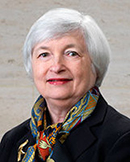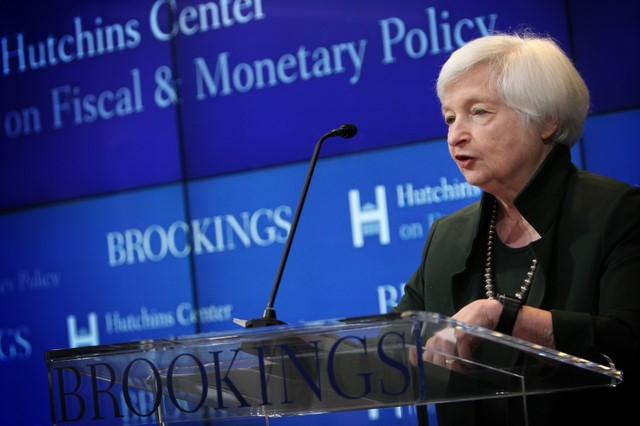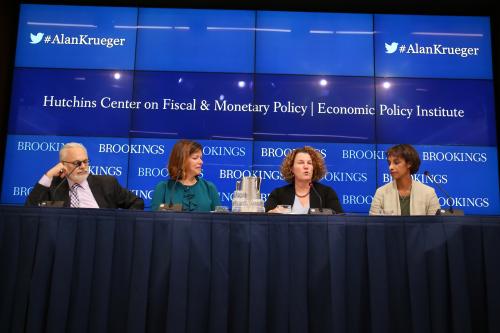This remark was delivered at a public event, “The gender and racial diversity of the federal government’s economists” hosted by the Hutchins Center on Fiscal & Monetary Policy at Brookings on September 23, 2019.
It’s a pleasure to welcome you to the Hutchins Center conference on diversity among the federal government’s economists. We will discuss the progress of women and minorities in the field of economics, with a particular focus on trends in the federal government. Within the economics profession, women and minorities are significantly underrepresented. And data compiled by the American Economic Association’s Committees on the Status of Women in the Economics Profession and the Status of Minority Groups in the Profession show that there has been little or no progress in recent decades. Women today make up only about 30 percent of Ph.D. students. Within academia, their representation drops the higher up one goes in the career ladder. The share of Ph.D.s awarded to African Americans is low; and it has declined slightly in recent decades. As David will shortly describe, the data collected for today’s session show that the representation of women and minorities in the federal government, including the Federal Reserve, is higher than in academia and has increased slightly in recent years—encouraging findings. But there is much that can and should be done to improve the representation and success of women and minorities within the federal government.
Why does diversity matter? What makes it important for the economics profession to become more inclusive? The first reason is basic fairness. The American Economic Association (AEA) surveyed its members last year to understand how economists view the professional climate in the field. The results were disturbing to say the least. Only 20 percent of women—half as many as men—reported themselves satisfied with the climate in economics. Women feel less valued and less included socially. Many feel that their talents are not fully realized. And all too many women and minorities have suffered harassment and discrimination during their careers, including both overt acts of abuse as well as more subtle forms of marginalization. To avoid harassment or disrespectful treatment, a large share of women report altering their behavior in ways that may be counterproductive for their career. Along all dimensions of discrimination examined in the survey, Asians, African American and Latinx economists report having substantially worse experiences than their white counterparts. Nearly half of African American economists report unfair discrimination based on their race. Such a pattern of discrimination and mistreatment is unfair. It is unacceptable. Practices and patterns of behavior that are widespread in the profession are harming the progress of women and minorities. And they are diminishing their job satisfaction.
Beyond fairness, the lack of diversity harms the field because it wastes talent. Individuals with the aptitude and interest to contribute to the field are discouraged from pursuing a career in economics. It also skews the field’s viewpoint and diminishes its breadth. Within the federal government, diversity is especially important because diverse perspectives, inspiring the best ideas and decisions, translate into better service to the public. Moreover, diversity within the federal workforce promotes the mission that the government is supposed to serve.
Diversity is important in insuring that the research that is done within economics appropriately reflects society’s priorities.
Diversity is important in insuring that the research that is done within economics appropriately reflects society’s priorities. Women work in all areas of economics, but they tend to be attracted to fields that are more people-oriented like health, education, development and labor. They gravitate less to macro, econometrics and finance. Women focus on issues of great importance that are understudied by men. I’m particularly thinking about gender issues—such as the treatment of women (who are more than half the world’s population), the family (which is humankind’s most important institution), children (who at some point in our lives includes everyone) and health care (which also concerns all of us). Many government and business decisions affect women and men, and people of different racial backgrounds differently. If economists are mainly of one gender or race, they are likely to miss things that matter. Underrepresentation of women likely constrains the range of issues addressed and limits our ability to understand familiar issues from new and innovative perspectives. A recent paper shows concretely the importance of gender in determining patterns of research. It finds that female medical researchers produce greater medical advances for women. Patents with women inventors are significantly more likely to focus on female diseases and conditions. The findings suggest that the demography of inventors matters for what is invented.
Women and men often have significantly different approaches and views on issues that are important to public policy. That makes it especially important to hear women’s voices. Yet the AEA survey found that almost half of women in the profession report that they have not asked a question or presented an idea at conferences for fear of being treated unfairly. That compares with 18 percent of men. A recent survey found that male and female economists have significantly different opinions on questions pertaining to health insurance and the minimum wage. Relative to male economists, women are more supportive of government regulation, more concerned about inequality, and less likely to see labor market opportunities for men and women as equal. The overwhelming preponderance of men in the economics profession likely causes the profession’s work to be biased toward results they find more appealing. The prevailing range of views among economists is likely to be biased by the relative lack of women and minority economists.
Diverse groups outperform in solving complex problems and ethnic diversity appears to promote deliberation and disrupt conformity.
Research, including lab experiments, shows that diversity changes group dynamics and decision-making. Mixed gender groups display more intense mutual monitoring and produce better outcomes in business-oriented scenarios. Diverse groups outperform in solving complex problems and ethnic diversity appears to promote deliberation and disrupt conformity. A study of academic research found that papers written by ethnically diverse research teams receive more citations and are higher impact than papers written by authors from the same ethnic group. My friend and former colleague Christine Lagarde often half-jokes that if Lehman Brothers had instead been Lehman Sisters there might not have been a financial crisis. I see much truth in this observation. Many studies find that women are more risk averse than men and they are less likely to suffer from overconfidence. For example, a recent paper by a group of Harvard researchers looks at gender differences in the openness of experts to the opinions of others. They find that among a group of expert faculty at 7 US medical schools, women updated their assessments more often than men in response to outside information and women in male-dominated subfields were particularly likely to update. The findings suggest that there are systematic differences in how even world-class experts self-assess their competence. These differences in self-assessment can lead to substantial gender and status disparities in whose opinion ultimately matters in collective expert judgment. Experimental evidence also suggests that markets with ethnic diversity are less likely to develop bubble-type excesses. In an experiment in which participants traded stocks to earn money, researchers randomly assigned participants either to ethnically homogenous or ethnically diverse markets. In the markets with ethnic diversity, prices became more accurate, relative to the fundamentals of the stocks, as trading proceeded. But in the ethnically homogeneous markets, pricing accuracy declined over the course of the simulation. Overpricing was common, as traders were more likely to accept speculative prices. Ethnically homogeneous traders were more prone to fall into group-think, making big-time errors, and suffering larger crashes when bubbles burst, whereas diverse groups were more likely to be skeptical and questioning of each other’s views.
To conclude, diversity within the economics profession and in the federal government deserves to be top priority. I look forward to today’s discussion of what we can do to practically promote this objective.





